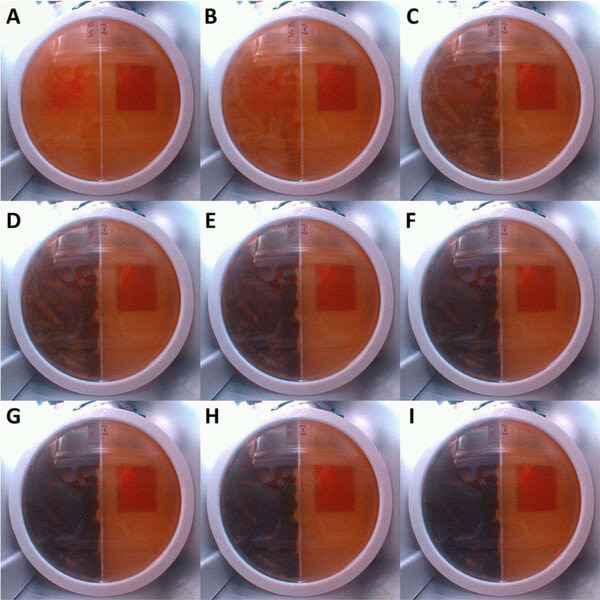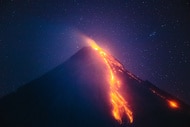Create a free profile to get unlimited access to exclusive videos, sweepstakes, and more!
Nuclear fallout fungus that survived Chernobyl and eats radiation could turn into cosmic ray shields for astronauts

Something that devours radiation and survived a nuclear holocaust sounds like it should have its own comic series. Maybe it should, because it actually exists.
Fungus is probably not the first thing anyone would think of when it comes to even an unlikely superhero. If anything, fungi would probably get the villain treatment, like the Mushroom People in Matango (above), since so many of them are either poisonous or just vomit-inducing. Cladosporium sphaerospermum is not that fungus. It not only replicates and heals itself but metabolizes potentially lethal radiation. This is why a team of researchers is now studying how this mold—yes, mold—could be used as a shield that protects astronauts from radiation in space.
“C. sphaerospermum out-competes other organisms in this non-natural habitat (foremost in the contamination radius around the plant), due to its apparent radio-resistance,” Nils J.H. Averesch, who co-authored a study on the amazing fungus now on the preprint server bioRxiv, told SYFY WIRE. “There is also an indication that the organism can utilize certain forms of highly energetic ionizing and non-ionizing radiation as a metabolic support function, effectively allowing it to grow faster than normal, which probably have led to the fungus populating the radioactive sites.”
If that sounds post-apocalyptic, it sort of is. Chernobyl was something of an apocalypse in itself. When the Ukrainian power plant exploded in 1986 because of a defective reactor, it released 400 times more radioactive material into the atmosphere than the atomic bomb that hit Hiroshima. Averesch and his team recently discovered fungi thriving near the dead reactor. It processes radiation through radiosynthesis much as plants photosynthesize light. When they studied it up close, they found evidence of it using melanin, the same pigment found in human skin, to morph gamma rays and X-rays into the chemical energy it needs to survive.
Averesch also suspects C. sphaerospermum might feed on UV light. That needs more investigation, but the how it metabolized gamma and X-rays in an ISS experiment could mean a positive outlook for upcoming missions to the Moon and Mars. Both have next to nothing of an atmosphere or magnetic field and get bombarded with radiation.
“While on Earth, most sources of radiation are gamma- and/or X-rays; radiation in space and on Mars (also known as GCR or galactic cosmic radiation) is of a completely different kind and involves highly energetic particles, mostly protons. This radiation is even more destructive than X- and gamma-rays, so not even survival of the fungus on the ISS was a given,” he said.
On the ISS, a petri dishes with C. sphaerospermum was exposed to cosmic radiation. Next to it was a control dish with no fungus, and radiation sensors connected to Raspberry Pi devices found that the mold was able to reduce radiation levels by about 2 percent, possibly up to 5 percent if it completely surrounded an object as a human shield would. That was for a layer between 0.06 and 0.07 inches thick. The team figured that canceling out most of the radiation on Mars would take an 8-inch layer of fungus, but if Martian regolith were factored into the shield, only 3.5 inches would be enough. Astronauts wouldn’t even need to take much along with them to Mars because it self-replicates so fast.
The experiment was too simple for the team to distinguish between most of the different types of radiation that made it through the hull of the ISS, though they were able to tell that it was synthesizing gamma radiation. Another thing they were not able to account for was whether the space station’s hull interfered. Particles of cosmic radiation that interact with something like that can make the radiation spectrum that ultimately gets through even worse, making radiation-proofing even more necessary.
“Nevertheless, the fungus may contribute to this combined solution and could substantially facilitate and improve its design,” Averesch said. “As a living organism, the fungus is self-replicating, adaptive, and potentially also self-repairing after high-radiation events.”
For now, we totally need a punk band called Nuclear Fallout Fungus.















